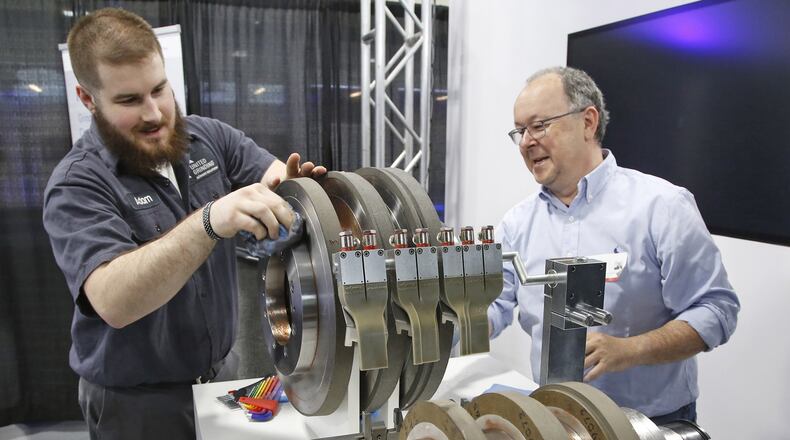LOCAL: Leadership program for women launched in Dayton area
The region that includes Montgomery, Miami and Greene counties has just now recovered all of those jobs, he said, they’re just not the same jobs.
The area has gained about 25,600 jobs in the past four years, he said, and 9,900 jobs in the past year alone. Area employment as of March was at 393,800.
“I’ve waited so many years for this moment,” Stock said.
Fred Burkhardt, director of the Trotwood Community Improvement Corp., which is the city’s private development arm, said the regional rate of job growth squares with what he’s seen.
“We’re seeing real job growth of existing companies, as well as new companies,” Burkhardt said.
MORE: Bankrupt local nursing homes sold to Toledo hospital network
As the economy picks up, he said one of the challenges Trotwood faces is that few industrial buildings are left that are move-in ready or close to move-in ready.
Some manufacturers have gotten creative and taken over empty big box retail stores, Burkhardt said, but his organization is weighing whether to build some light industrial buildings to create options for growing “garage businesses” looking for space to lease.
While some manufacturing jobs have been coming back over the past few years, Stock said, the Dayton area has 43 percent less manufacturing jobs than it did in 2000. But it has rebounded about 10 percent from the low point in 2010.
Dayton, Cincinnati and Ohio as a whole have all lost manufacturing jobs. However, Stock found Cincinnati only lost about 22 percent since 2000 and Ohio has lost about 32 percent.
MORE: Harrison Twp. invests in tear downs, gains new business
Over the past decade, average pay in the Dayton metro went from being above the state and national average, he said, to below the state and national average.
“The destruction of our high-wage manufacturing industry from 2007 to 2010 meant there was a substantial number of high-wage jobs in manufacturing that just disappeared,” Stock said.
Wages in Dayton have declined from $918 in average weekly earnings in 2007 to $744 in 2017, Stock said, measured in 2017 dollars for consistency. But average weekly pay for the U.S. is up from $869 to $906 and for Ohio overall up from $813 to $827.
Justin Sommer, Piqua assistant city manager, said while wages in the region are lower than other communities, the cost of living also is lower. The Miami County city tracks wage data and he said it has seen some increases because employers are having to compete more for workers.
“When you look at the unemployment in the counties north of I-70, the unemployment is very, very low. So I think that has had a greater pressure on wage rates,” Sommer said.
MORE: Going, going, gone? Dayton’s newest housing fills up
Health and social assistance employment has risen 37 percent since 2000, Stock said, which was one of the sharpest gains. Health care jobs had been growing locally at a slower pace than the U.S. and Ohio but jumped last year.
“We were consistently lagging behind the rest of the country, including Ohio and Cincinnati as a whole, and now all of a sudden there’s been this leap back up,” Stock said.
Federal government employment in the Dayton area is up 1.7 percent since 2000, he said. Local federal jobs declined between 2000 and 2008 but jumped almost 14 percent over the past decade, with those jobs mostly tied to Wright-Patterson Air Force Base.
Federal jobs are down in Cincinnati, which Stock said appears to be a reflection of the squeeze on non-defense spending.
“It’s more severe on Cincinnati as a whole,” he said.
MORE: Here’s what it costs to rent 8 places in downtown Dayton
About the Author
